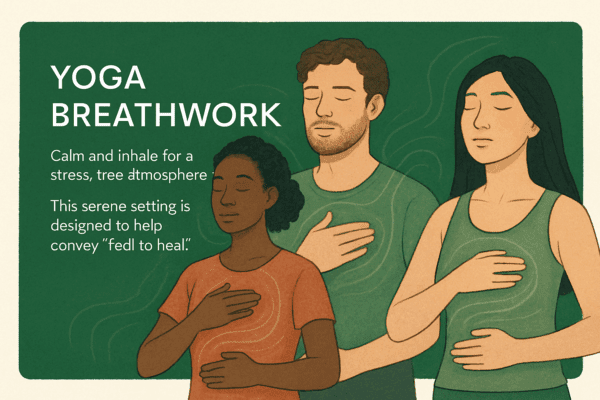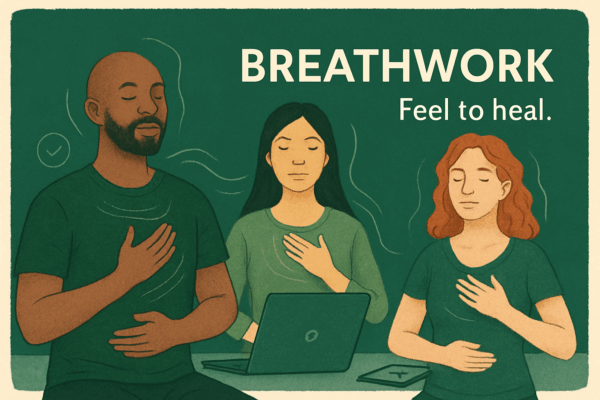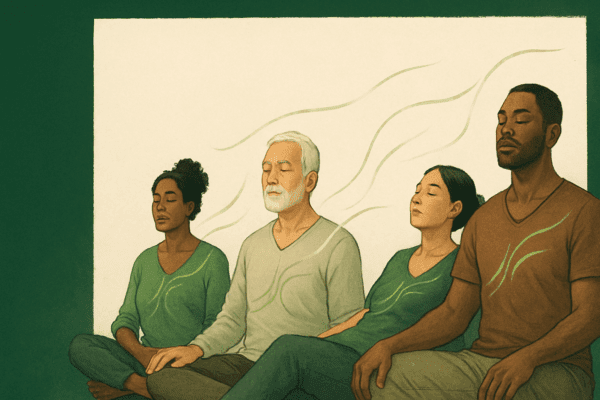In 2025, breathwork movement is revolutionizing healing—are you ready to unlock your body’s innate power? This guide offers a comprehensive, actionable path to harnessing breathwork movement for deep healing. By blending conscious breathing with intentional movement, you can access profound physical, emotional, and mental transformation. Discover the latest science, benefits, step-by-step practices, trauma healing tools, daily integration strategies, and emerging trends. Experience the promise of real change—start your journey toward holistic well-being today.
The Science Behind Breathwork Movement
Breathwork movement is quickly gaining traction as a transformative approach to holistic healing. But what exactly makes this practice so powerful—and how does it work beneath the surface? Let’s break down the science behind breathwork movement and discover why it’s changing lives in 2025.
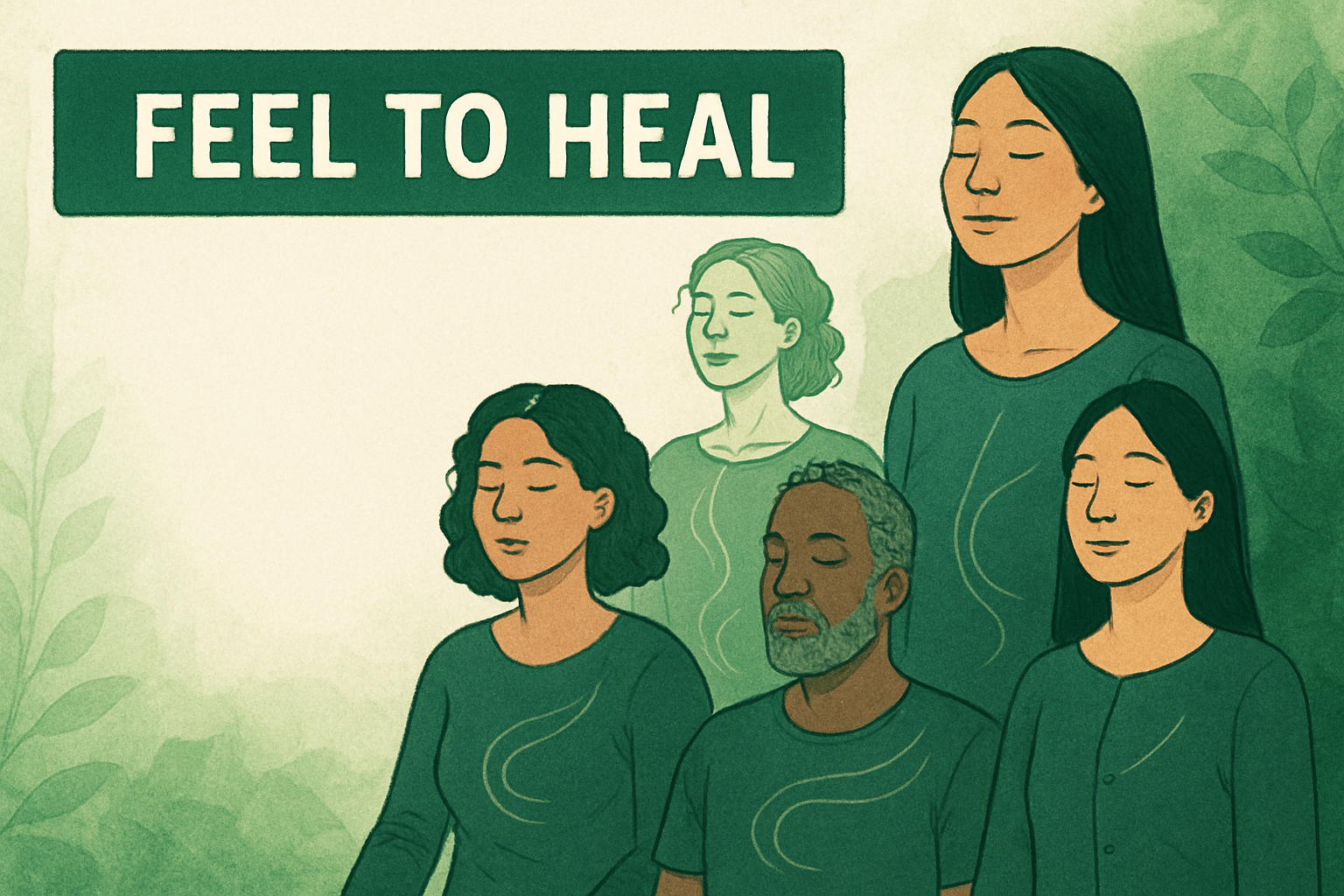
What Is Breathwork Movement?
Breathwork movement is the intentional pairing of conscious breathing techniques with physical movement. This practice isn’t just about deep breathing or exercise alone. Instead, it’s about weaving breath and movement together so that each supports and amplifies the other.
When you engage in breathwork movement, you invite your body and mind to work as a team. This integration encourages a state of balance, making healing more accessible and profound.
The Physiology of Breath and Movement
Breath is a direct line to the nervous system. When you inhale and exhale consciously, you’re not just filling your lungs—you’re signaling your body to shift gears. Shallow, rapid breaths activate the sympathetic nervous system, which puts you in “fight or flight” mode. Deep, slow breaths, on the other hand, stimulate the parasympathetic nervous system, guiding your body toward relaxation and restoration.
Movement adds another layer. Gentle physical activity—like rocking, stretching, or flowing through yoga poses—boosts circulation, helps release physical tension, and increases embodied awareness. When movement is synchronized with breath, the effects multiply, leading to a more regulated nervous system and a calmer mind.
Science-Backed Benefits
The benefits of breathwork movement aren’t just anecdotal. Research in the Journal of Psychiatric Research (2019) found that practices like yoga and tai chi, which blend breath and movement, significantly reduce anxiety and depression. Participants also reported improved mood and overall quality of life.
Another study in the Journal of Alternative and Complementary Medicine highlighted that even brief sessions of coordinated breath and movement can lower stress hormones and boost feelings of well-being. These findings show that breathwork movement has measurable, lasting effects on both physical and mental health.
If you’re curious about the scientific mechanisms behind breathwork movement, Breathwork for Healing Trauma: Science-Backed Healing Techniques offers an in-depth look at how these practices support trauma healing and nervous system regulation.
Somatic Therapy and the Mind-Body Connection
Somatic therapy teaches us that trauma and chronic stress aren’t just “in your head”—they’re stored in your muscles, fascia, and nervous system. Traditional talk therapy can be helpful, but it often misses the body’s role in healing. Breathwork movement offers a “primal language” for communicating with the deepest parts of ourselves.
By moving and breathing consciously, you help your body process and release patterns of tension, numbness, or overwhelm that might have been stuck for years. This approach helps metabolize unprocessed emotions, offering a pathway from survival mode to a sense of safety and wholeness.
Example: Circular Body Movement for Emotional Regulation
Imagine sitting comfortably, feet grounded, and beginning gentle circular rocking of your torso. As you inhale, you expand your chest and lengthen your spine; as you exhale, you soften and round forward. This simple breathwork movement practice can help regulate emotions, offering a sense of calm and control during stressful moments.
Over time, these small, mindful actions create big shifts—helping you feel more connected, resilient, and alive. Breathwork movement is not just a trend; it’s a science-backed pathway to healing in 2025.
Key Benefits of Breathwork Movement for Healing
Breathwork movement is gaining recognition for its profound impact on holistic healing. Whether you’re seeking emotional balance, better physical health, trauma resolution, sharper thinking, or simple accessible routines, this approach offers something for everyone.
Let’s break down the key benefits that breathwork movement can provide in your healing journey.
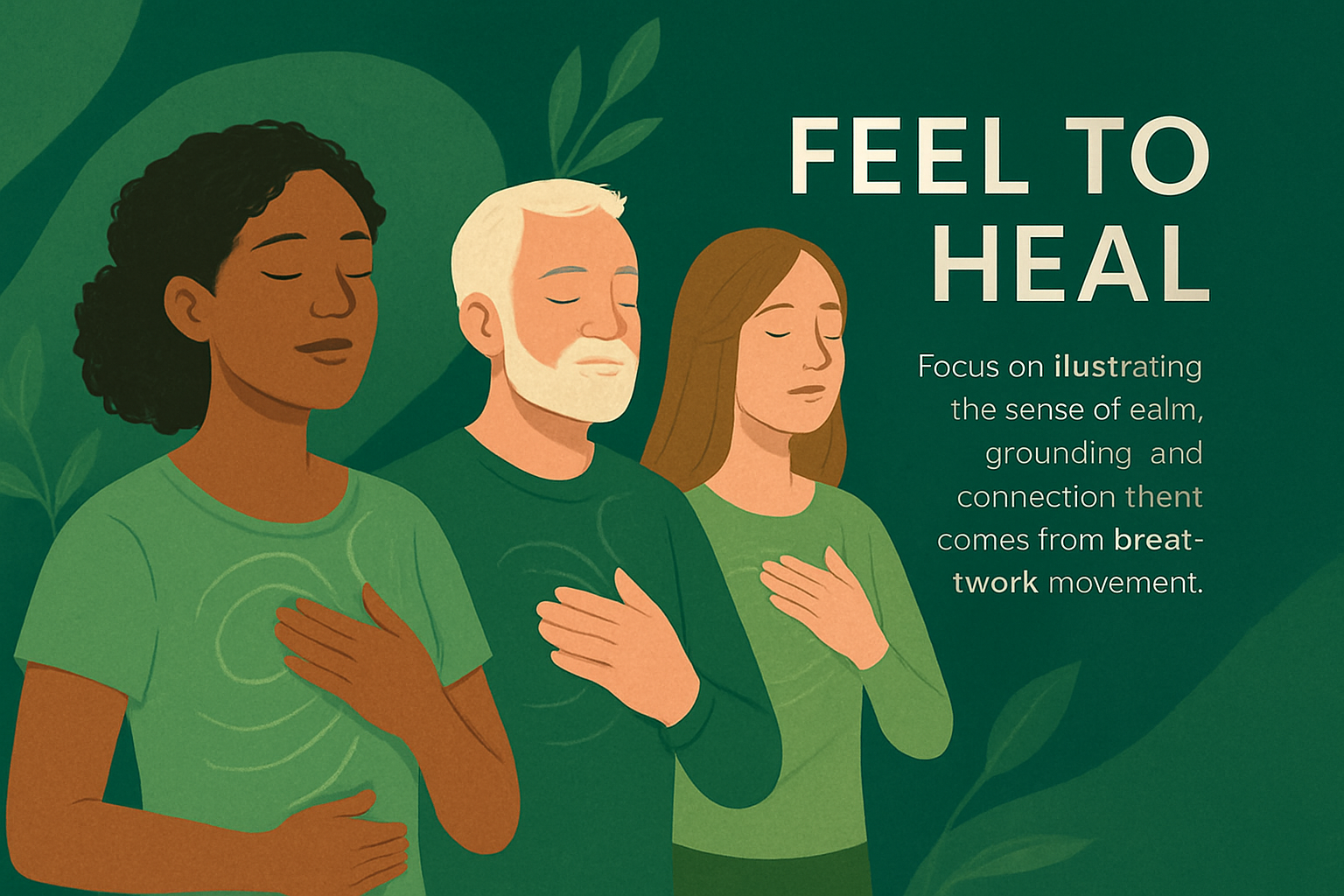
Emotional Regulation and Nervous System Balance
One of the most celebrated benefits of breathwork movement is its ability to help regulate emotions. By combining conscious breathing with gentle movement, you create a direct line to your nervous system.
This approach activates the parasympathetic response, which helps calm racing thoughts and soothes the body’s stress signals. The result? Less anxiety, a more balanced mood, and greater emotional resilience.
People practicing breathwork movement often report feeling centered and able to face life’s challenges with more ease. Simple practices—like pairing slow, deep breaths with mindful swaying—can quickly reset your emotional state.
Physical Health: Heart, Muscles, and Energy
Breathwork movement does more than quiet the mind; it also supports physical health on multiple levels. Deep, rhythmic breathing improves heart rate variability, a key marker of cardiovascular well-being.
Synchronizing movement with breath helps release muscle tension and encourages blood flow. This means less stiffness, fewer aches, and a natural boost in energy.
Many people notice that regular breathwork movement leaves them feeling lighter and more vibrant. It’s an accessible way to promote daily physical vitality, regardless of age or fitness level.
Trauma Resolution and Restoring Safety
Trauma can leave lasting imprints in both body and mind. Breathwork movement offers a gentle, somatic way to address these patterns, supporting the release of stuck emotions and restoring a sense of inner safety.
By integrating breath and movement, you help process unprocessed experiences and shift from a state of overwhelm to grounded presence. Practitioners describe feeling more at home in their bodies after consistent practice.
For a deeper dive into techniques and benefits, explore the Trauma Release Breathwork Guide: Techniques & Benefits 2025, which highlights how breathwork movement supports trauma healing in practical ways.
Cognitive Clarity and Mental Focus
Breathwork movement isn’t just about emotional and physical healing—it can also sharpen your mind. Conscious movement with breath increases oxygen flow to the brain and helps regulate mental states.
This combination improves focus, enhances mental clarity, and supports better decision-making. Whether you’re facing a busy workday or need to reset after stress, these practices can help clear mental fog.
Many participants note greater creativity and problem-solving abilities after incorporating breathwork movement into their routines. It’s like giving your brain a much-needed breath of fresh air.
Accessibility and Scientific Evidence
A standout feature of breathwork movement is its accessibility. These practices can be adapted for any age, body type, or fitness level, making them suitable for a wide audience.
Scientific research backs up these benefits. Studies on yoga, tai chi, and somatic movement therapies show significant improvements in mood, stress reduction, and overall quality of life with consistent practice.
| Benefit | Evidence Source | Reported Outcome |
|---|---|---|
| Emotional Regulation | Yoga, Somatic Movement (2019) | Reduced anxiety & stress |
| Physical Health | Tai Chi, Breathwork studies | Improved HRV, less tension |
| Trauma Resolution | Somatic Therapy Programs | Greater resilience, safety |
| Cognitive Clarity | Mind-Body Interventions | Sharper focus, clarity |
Regular breathwork movement sessions leave practitioners feeling grounded, resilient, and empowered to meet daily demands.
Step-by-Step Guide: Breathwork Movement Practices for 2025
Ready to experience the healing power of breathwork movement? This guide walks you through essential steps for building a safe, effective, and transformative practice. Whether you’re a beginner or looking to deepen your routine, here’s how to unlock your body’s potential, one breath and movement at a time.
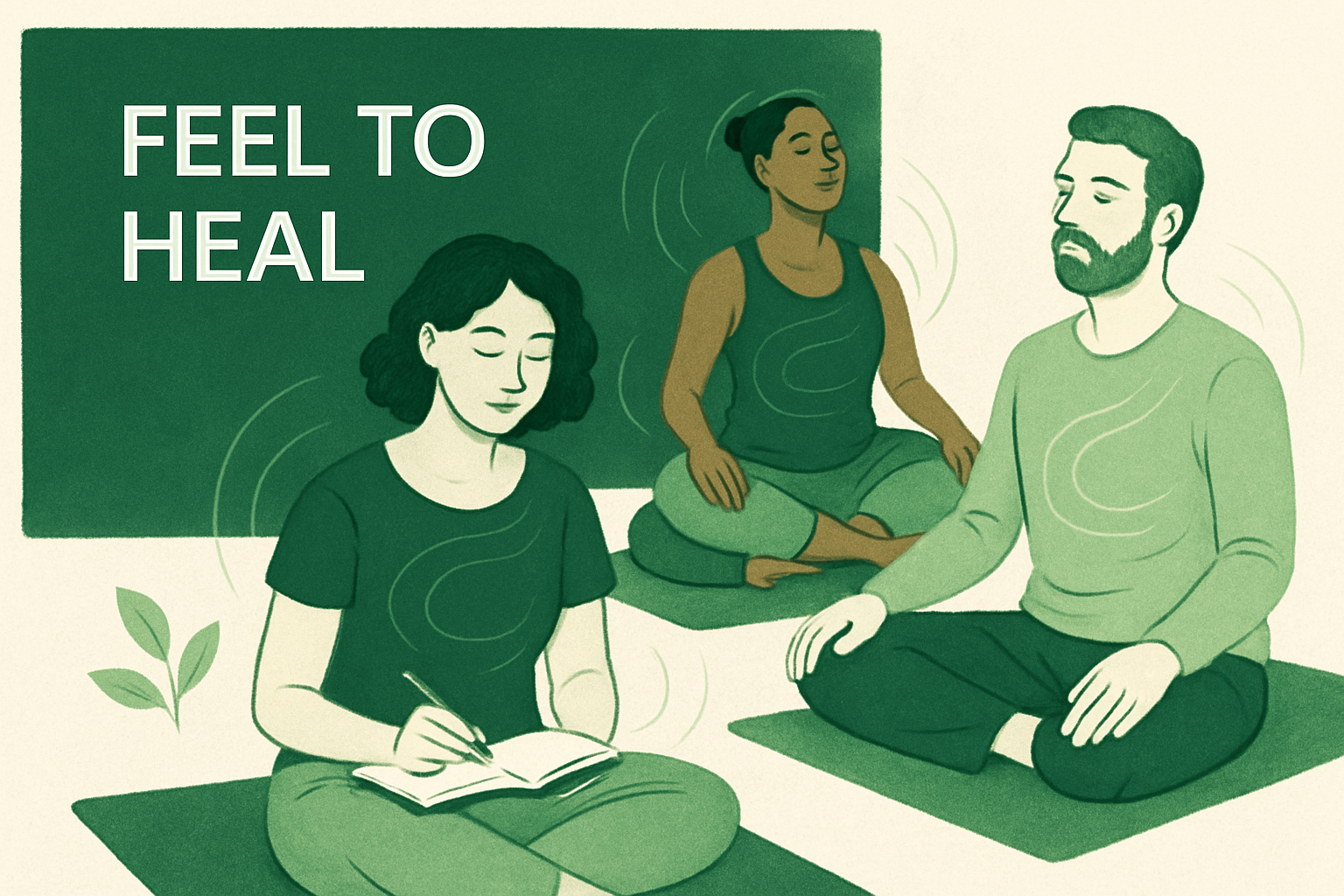
Preparing for Practice
Before you start, creating a supportive environment for breathwork movement is crucial. Choose a quiet, comfortable space where you can move freely and feel safe. This could be a cozy corner at home, a serene outdoor spot, or even a private area in your office.
Set an intention for your session. Ask yourself: What do I wish to heal or explore today? Journaling your intentions, even in a few lines, can anchor your breathwork movement practice and help you track progress over time.
Bring in props that enhance comfort and safety. A yoga mat, soft cushions, and soothing music can make a big difference. Notice your body—tune into any tension, fatigue, or emotions before you begin.
If you have health concerns or mobility limitations, consult a healthcare professional before diving into new movement routines. Adapt the breathwork movement to match your body’s needs. Self-compassion is your best guide.
Aim for consistency, but don’t pressure yourself. Many find daily breathwork movement brings the most benefit, while others prefer two to three sessions per week. Remember: every step counts on the path to healing.
Foundational Techniques: Breathwork Basics
Start with the foundation. These simple breath techniques are the building blocks of a sustainable breathwork movement routine.
- Diaphragmatic Breathing: Place a hand on your belly. Inhale slowly through your nose, letting your belly rise. Exhale gently, feeling your belly soften. This grounds your nervous system and prepares your body for movement.
- Alternate Nostril Breathing: Use your thumb and ring finger to close off one nostril at a time. Inhale through the left, exhale through the right, then reverse. This balances energy and calms the mind.
- Coherence Breath: Breathe in for 5 counts, out for 5 counts. Sync your heart and breath rhythms for deep relaxation.
- Counting Breath Cycles: Focus by counting each breath—inhale, exhale equals one. Try for 10 cycles, returning to one if distracted.
A favorite for beginners is the 4-7-8 Breathing technique. Inhale for 4, hold for 7, exhale for 8. This is a quick reset for stress and anxiety.
Tips for success:
- Keep your posture tall yet relaxed during breathwork movement.
- Go at your own pace; there’s no rush.
- If your mind wanders, gently guide your attention back to your breath.
Want more ideas? Explore a variety of breathwork techniques and practices to expand your toolkit.
Integrating Movement: Core Breathwork Movement Exercises
Now, let’s blend movement with breath to amplify healing. Core breathwork movement exercises are accessible and adaptable for every body.
- Seated Circular Body Rocking: Sit comfortably. Begin gentle circles with your torso, inhaling as you move forward and exhaling as you round back. This releases tension and connects breath to the spine.
- Gentle Yoga Flows: Try cat-cow stretches, child’s pose to cobra, or simple sun salutations, moving with each breath. Inhale to open, exhale to fold or round.
- Tai Chi-Inspired Sequences: Stand with feet hip-width apart. Shift weight side to side, arms floating up on inhale, lowering on exhale. These slow, flowing movements ground and energize.
- Qigong Breathing: Stand or sit. Inhale as arms sweep wide, exhale as they return to the heart. Imagine drawing in fresh energy and releasing heaviness.
- Somatic Movement for Trauma Release: Tune into where your body feels stuck. Gently sway, shake, or stretch while breathing deeply, letting emotions move through.
Modify each breathwork movement for your needs. Use a chair for support or reduce range of motion if needed. The key is to listen inward.
Example: Inhale as you raise your arms overhead, exhale as you lower them. This simple flow can reset your mood and restore calm.
| Exercise | Purpose | How to Modify |
|---|---|---|
| Circular Body Rocking | Emotional regulation | Use a chair |
| Gentle Yoga Flow | Flexibility, grounding | Slow pace, props |
| Tai Chi Movement | Balance, energy | Seated variation |
| Qigong Breathing | Vitality, focus | Smaller arm circles |
Explore what feels best. Each breathwork movement session is unique—let your body lead.
Progressing Your Practice: Advanced and Creative Approaches
Once you’re comfortable with basics, it’s time to get creative. Advanced breathwork movement practices layer in new dimensions for deeper healing.
- Sound and Touch: Hum or sigh as you move, or gently tap your body to awaken sensation.
- Emotional Expression: Let your body shake, sway, or even vocalize as emotions arise. This can help release stuck energy.
- Mindful Walking: Take slow, deliberate steps, syncing each inhale and exhale with your movement. Notice how your body feels with each stride.
- Meditation and Visualization: Combine breathwork movement with guided imagery. Picture healing light or soothing waves as you move and breathe.
- Group or Partner Practices: Practice with a friend or group to co-regulate nervous systems and deepen your sense of connection.
Example: Play calming music and let the tempo guide your breathwork movement. Notice how rhythm and sound enhance your experience.
Continue to experiment. Journaling after sessions can reveal insights and track your progress. Over time, breathwork movement becomes a personal journey of discovery and transformation.
Breathwork Movement for Trauma Healing
Healing trauma requires more than just talking about it. The body remembers, often holding onto stress and emotional pain long after the mind has processed the experience. Breathwork movement offers a unique pathway to release these imprints, unlocking the body’s natural ability to heal and restore balance.
Understanding Trauma and the Body
Trauma isn’t just a story in the mind—it’s a lived experience in the body. When something overwhelming happens, the nervous system can become stuck in patterns of fight, flight, or freeze. Over time, these responses may show up as muscle rigidity, numbness, overwhelm, or a sense of disconnection from oneself.
Talk therapy can be helpful, but it often doesn’t reach the somatic layers where trauma is stored. Breathwork movement bridges this gap by inviting both breath and gentle motion, allowing the body to gradually unwind tension. This approach encourages a sense of safety and presence, essential for real healing.
Restoring embodiment means tuning into physical sensations and emotions, learning to recognize signals of distress, and slowly building capacity to stay with discomfort. For example, many clients describe a shift from feeling frozen or hyper-alert to experiencing grounded presence after practicing breathwork movement.
Somatic Approaches and Evidence-Based Techniques
Somatic therapy uses body-based methods to help people process and release trauma. Breathwork movement is at the heart of these practices, combining conscious breathing with mindful movement to metabolize unprocessed emotions and complete stress cycles. Techniques like guided body scans, gentle rocking, and rhythmic movement with breath are proven tools in trauma recovery.
Research shows that trauma-informed breathwork movement supports resilience by building internal and external resources. Participants in these programs often report feeling calmer, more centered, and less burdened by old patterns. Notably, studies highlight measurable improvements in well-being and reductions in trauma symptoms.
If you want to explore these approaches further, Somatic breathwork for trauma healing offers deeper insights and practical resources. Integrating these modalities into your healing journey can help restore trust in your body and support lasting transformation.
The Biodynamic Breathwork Institute: A Holistic Approach
The Biodynamic Breathwork Institute, founded by Giten Tonkov, is a leader in trauma-informed breathwork movement. Their BBTRS® system brings together breath, movement, sound, touch, and meditation into a comprehensive, six-element approach for trauma release.
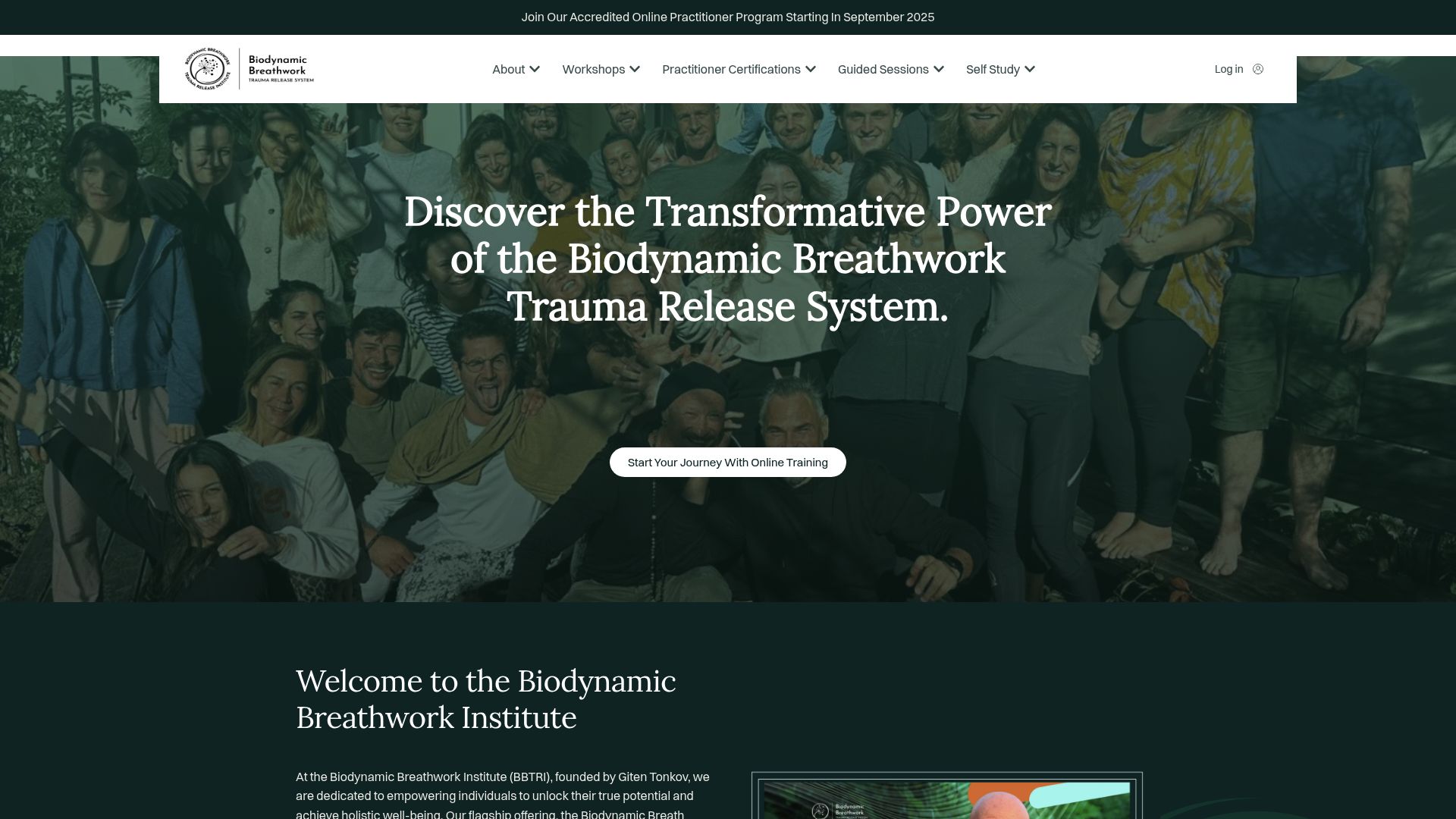
BBTRS® is grounded in science and designed to be accessible worldwide, whether online or in person. Programs range from workshops to certifications, making it suitable for both personal healing and professional development. This method is trauma-informed, focusing on safety, gradual progress, and building resilience at every stage.
By addressing trauma at its roots, the Biodynamic Breathwork Institute empowers individuals to reclaim their sense of wholeness. Whether you’re seeking to heal yourself or support others, breathwork movement through BBTRS® offers a path toward deep, lasting change.
Integrating Breathwork Movement into Daily Life
Making breathwork movement a natural part of your daily life is the secret to unlocking its full healing potential. It’s not just about long sessions or special classes—consistent, mindful integration throughout your day is where real transformation happens.
Start with micro-practices. These are short, simple breathwork movement moments you can weave into work breaks, commutes, or even before bed. Try a 2-minute seated breath and gentle shoulder roll while waiting for your coffee to brew. Or, pause for three deep, intentional breaths while stretching your arms overhead during a busy afternoon.
Creating daily rituals helps anchor your practice. Consider greeting the morning with a slow, breath-synchronized stretch or winding down at night with gentle rocking and conscious breathing. These small routines build resilience and keep your nervous system balanced.
Tracking your progress can make breathwork movement more rewarding and sustainable. Journaling after each session, using wellness apps, or partnering with an accountability buddy brings awareness to your journey. Noticing how your mood, focus, or energy shifts over time encourages you to keep going.
Obstacles are normal. Maybe you feel too busy, lack motivation, or worry you’re “not doing it right.” The key is self-compassion and flexibility. If you miss a day, simply restart the next. Adjust your practice to fit your energy and schedule—remember, even a few mindful breaths with movement count.
Building a supportive environment is crucial. Join local or online communities, invite family members to practice with you, or attend group classes. Surrounding yourself with others who value breathwork movement can boost consistency and enjoyment. For inspiration on new ways to integrate these practices, explore 2025 breathwork movement trends that highlight evolving routines and community resources.
Here’s a simple example: Set a timer for a 5-minute midday reset. Stand, soften your knees, and slowly circle your arms as you inhale and exhale. Notice the shift in your energy and mood. Small, regular moments like these add up to lasting change.
By weaving breathwork movement into your daily life, you nurture your body, mind, and emotions—creating a foundation for healing that supports you far beyond the mat or cushion.
The Future of Breathwork Movement: Trends and Innovations for 2025
The landscape of breathwork movement is rapidly evolving as we head into 2025. Once a niche wellness practice, breathwork movement is now stepping into the mainstream, shaping how individuals, workplaces, and health professionals approach holistic healing.
Mainstream Adoption and Integration
Breathwork movement is gaining traction across wellness studios, mental health clinics, and even corporate offices. Companies are introducing guided sessions for staff, recognizing the benefits for stress reduction and creativity. This increased visibility is helping to destigmatize mind-body practices and make them accessible to a wider audience.
Technology-Driven Transformation
One of the most exciting trends is the integration of technology. Apps now offer real-time guided breathwork movement sessions, while wearables track biometrics like heart rate variability and stress levels. Some platforms use virtual reality to create immersive group classes, where participants can see visualizations of their breath and movement in real time.
AI is also playing a role, delivering personalized breathwork movement protocols tailored to individual needs and feedback. Imagine receiving daily recommendations that adapt as your body and mind change—a new era of precision self-care.
Trauma-Informed Education and Healthcare
The future of breathwork movement includes a strong focus on trauma-informed approaches. Healthcare professionals and therapists are incorporating these practices into their treatment plans, recognizing their potential for supporting trauma recovery. New training programs and certifications are emerging, ensuring practitioners are equipped with skills grounded in both science and compassion.
For those interested in deepening their understanding, resources like The Power of Breathwork for Healing: Trauma-Informed Training and Education offer insights into best practices and the latest research.
Research, Diversity, and Innovation
Emerging studies are confirming the benefits of breathwork movement for a range of populations, from athletes and executives to trauma survivors and older adults. Researchers are exploring how regular practice improves mood, cognitive function, and physical health markers.
Cross-cultural influences are also shaping new forms of breathwork movement. By blending ancient traditions with modern science, practitioners are creating inclusive, adaptable methods that honor diverse backgrounds.
Here’s a quick look at key innovations:
| Trend | Description |
|---|---|
| Virtual Group Classes | Real-time, interactive sessions with biofeedback |
| Personalized AI Protocols | Tailored routines based on user data |
| Cross-Cultural Approaches | Integration of global breath and movement traditions |
| Trauma-Informed Training | Science-based, compassionate practitioner education |
Looking Ahead
As these trends converge, breathwork movement is poised to become a foundational pillar of holistic health in 2025. Whether accessed through a smartphone app, in a therapy session, or in a community class, the practice is making healing more accessible, personalized, and effective for everyone.
If you’re feeling inspired to experience the healing power of breathwork movement for yourself, you don’t have to wait—there are opportunities to start right where you are. Whether you’re curious about the basics or eager to dive deeper, you can take the first step toward transformation in a supportive environment. Imagine connecting with others, learning from experienced guides, and truly feeling the shifts in your body and mind—all from the comfort of home. Ready to put what you’ve learned into practice? Start your transformation journey from the comfort of your home.


